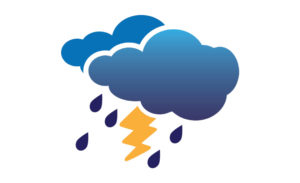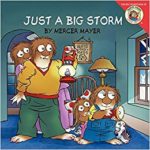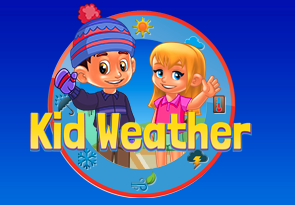With sirens howling, thunder crashing and lightening forking out of dark clouds, most anyone might feel a mixture of unease and awe with nature’s dramatic display. Many families, however, would prefer to skip the show given the emotional havoc that storms wreak on their kids.
Sarah Rost-Hyde from Box Elder says her daughter, age 9, has always had a fear of storms – large or small – since she was young. Running inside, her daughter will take cover under blankets or safely beside her mom for protection.
“Thunderstorms with loud cracks are the worst,” said Sarah. “Now that she’s a little older, she can deal with the little storms by putting in her headphones. But, when the big storms hit – I just have to hold her.”
If volatile weather sparks a crushing wave of panic in your child, calm storm preparation, soothing relaxation techniques and a dash of Weather 101 may help ease her fears.
Build calm before the storm.
“The most important thing that parents can do is prepare their children for severe weather way before it happens,” says Dr. Edward Christophersen, a pediatric psychologist. “Parents need to be cognizant that their behavior directly influences their child’s behavior. So, parents should very calmly practice their threatening weather procedures.”
Create a severe weather plan with your family.
Designate a safe area in your home, preferably a basement, or a bathroom or closet in the middle of the house on the lowest level. Store a storm safety kit in your safe area that includes a battery-powered weather radio, flashlight, blankets, a pair of leather gloves, and safety whistles.
With storm season imminent, take a few minutes several times a week to conduct family storm drills. Set up a small table in your basement for you and your family to engage in a familiar and relaxing activity like a board or card game. When threatening weather happens, calmly follow the plan you and your family practiced.

Practice relaxation techniques.
Play weather sounds for your child while you’re relaxing together, playing a game, eating dinner, or while she’s doing homework. Begin with very gentle sounds like a light rain and slowly progress to more serious rain and thunderstorms.
“The rationale here is to get the child to pair or associate weather sounds with frequently occurring activities that are not anxiety provoking,” Dr. Christophersen says.
Download free weather sounds to your laptop or smartphone, like “Sleepmaker Rain” or “SleepOwl”.
Teach Weather 101
Sometimes, children will need a more in-depth conversation to answer their questions. This is where a weather 101 talk is great!
“Kids are frightened of storms because they are loud, big, and can do a lot of damage,” said Chief Meteorologist at KOTA Mike Modrick. “Teach your kids the basics, show them they can watch the storms safely from inside and sit with them. And teach them over and over to come inside when storms pop up.”
The University Corporation for Atmospheric Research (UCAR) has great teaching modules for kids. There, parents and children can learn how storms, lightening, and hail form.
Mike also suggests teaching children how to stay safe during a storm with basic rules. These include: coming inside when there is a storm, having a “safe space” during a warning, and watching the local new to follow the weather.
“When you feel safe, there is a beauty to thunderstorms that kids can learn to appreciate, even in the heavy rains, the gusty winds, and my favorite, the rainbow after,” said Mike.
When to seek help.
Children commonly experience specific fears or phobias, but typically phobias wane as kids grow older. If your child’s phobia lasts more than six months after the storm has occurred and impairs her ability to participate in daily activities, find an experienced anxiety disorder therapist with supervised clinical experience in treating phobia. Dr. Christophersen says a reputable therapist will likely conduct a standardized anxiety screening. Avoid therapists who want to start therapy by giving your child an IQ test.
Springtime in the Black Hills of South Dakota can be a rollercoaster of weather. Be prepared and help your child get through the season with a plan in place, and ways to handle their weather woes.
words by Christa Melnyk Hines
Thunderstorm Resources
BOOKS
SITES
APPS










